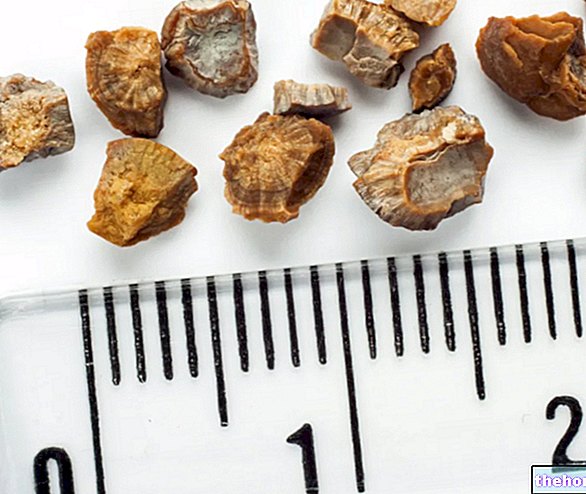What is cholangitis?
Cholangitis is an inflammatory process affecting the bile ducts. In most cases, inflammation depends on obstructive processes of a benign or malignant nature complicated by the presence of bacterial infections - favored by the underlying mechanical obstruction of the biliary tract by stones - or more rarely parasitic.

Infectious cholangitis: acute and chronic
Acute infectious cholangitis is the result of obstructive processes of the extrahepatic biliary tract, complicated by "bacterial invasion into the bile. It is therefore a secondary pathology to other morbid processes of the extrahepatic biliary tract, accumulated by biliary stasis and mostly attributable to stones or intrinsic or extrinsic stenosis of the choledochus of a benign or malignant nature (neoplasms of the bile ducts, gall bladder, ampulla of Vater, pancreas or duodenum).
Rarer cases in which infectious cholangitis results from diseases of the digestive tract (intestinal fistulas, ulcers or duodenal diverticula, acute appendicitis, typhus), of the pancreas (pancreatic tumors, cystic fibrosis, pancreatitis) or of the lymph nodes of the hepatic hilum (neoplasms , tuberculosis) Infectious cholangitis can be caused by injuries associated with surgery on the stomach, duodenum or appendix.
The obstructive process can also be caused by the presence of parasitic infestations, such as that from Ascaris lumbricoides or from Clonorchis sinensis. This is a "very rare occurrence in industrialized countries, where the germs most commonly responsible for the infection are bacteria: l"Escherichia coli first of all, and to follow pneumobacilli, salmonella, streptococci (Streptococcus faecalis), Enterobacter, Clostridia, Klebsiella And Pseudomonas. Generally, the infection - favored as often recalled by biliary stasis - occurs ascending (hence the term ascending cholangitis), more rarely via the blood, lymphatic or descending canalicular pathway. Bacterial infections can be simple or complicated the presence of pus (acute suppurative cholangitis), an event that increases the risk of ulceration, necrosis and haemorrhage.
The symptoms of infectious cholangitis vary according to the origin of the disorder and the general condition of the patient; in principle, they include intermittent fever, often preceded by chills and accompanied by abdominal pain and jaundice, also intermittent and accompanied by dark urine and light stools. To this triad (fever, pain in the right hypochondrium, jaundice), called Charcot's, is added the typical symptom picture of the underlying disease, of which cholangitis is a consequence. The procession of symptoms characteristic of liver disorders is common: nausea, vomiting, a sense of general malaise, indigestion.
The diagnosis uses cholangiographic techniques to study the irregularities and stenosis of the bile ducts, highlighting any obstacles to the outflow, while ultrasound, CT and magnetic resonance allow to identify the circumferential thickening of the wall of the bile ducts and any stones . As regards the hematochemical parameters, in the presence of infectious cholangitis, the rise in bilirubin (hyperbilirubinemia, especially in the conjugated portion), in the ESR, in the number of white blood cells (neutrophilic leukocytosis) and in serum enzymes related to biliary stasis (such as alkaline phosphatase). Generally contained the increase in the transaminases aspartate-aminotransferase and alanine aminotransferase.
Treatment of cholangitis involves the use of broad-spectrum antibiotics to resolve the infectious process; in any case, it cannot ignore the removal of any obstructive process responsible for biliary stasis, which can be performed by traditional, laparoscopic or endoscopic surgery.
In the absence of treatment, complications of the disease include liver abscess, secondary biliary cirrhosis, hepatic failure, renal failure and septic shock (life-threatening).
For further information: Medicines for the treatment of Cholangitis
Sclerosing cholangitis
Primary sclerosing cholangitis is an "autoimmune-based inflammation of the bile ducts, presumably caused by the development of exaggerated immune reactions against the bile ducts, leading to their abnormal narrowing. Sclerosing cholangitis is often associated with inflammatory bowel disease (mostly Crohn's disease and ulcerative colitis).
















.jpg)











